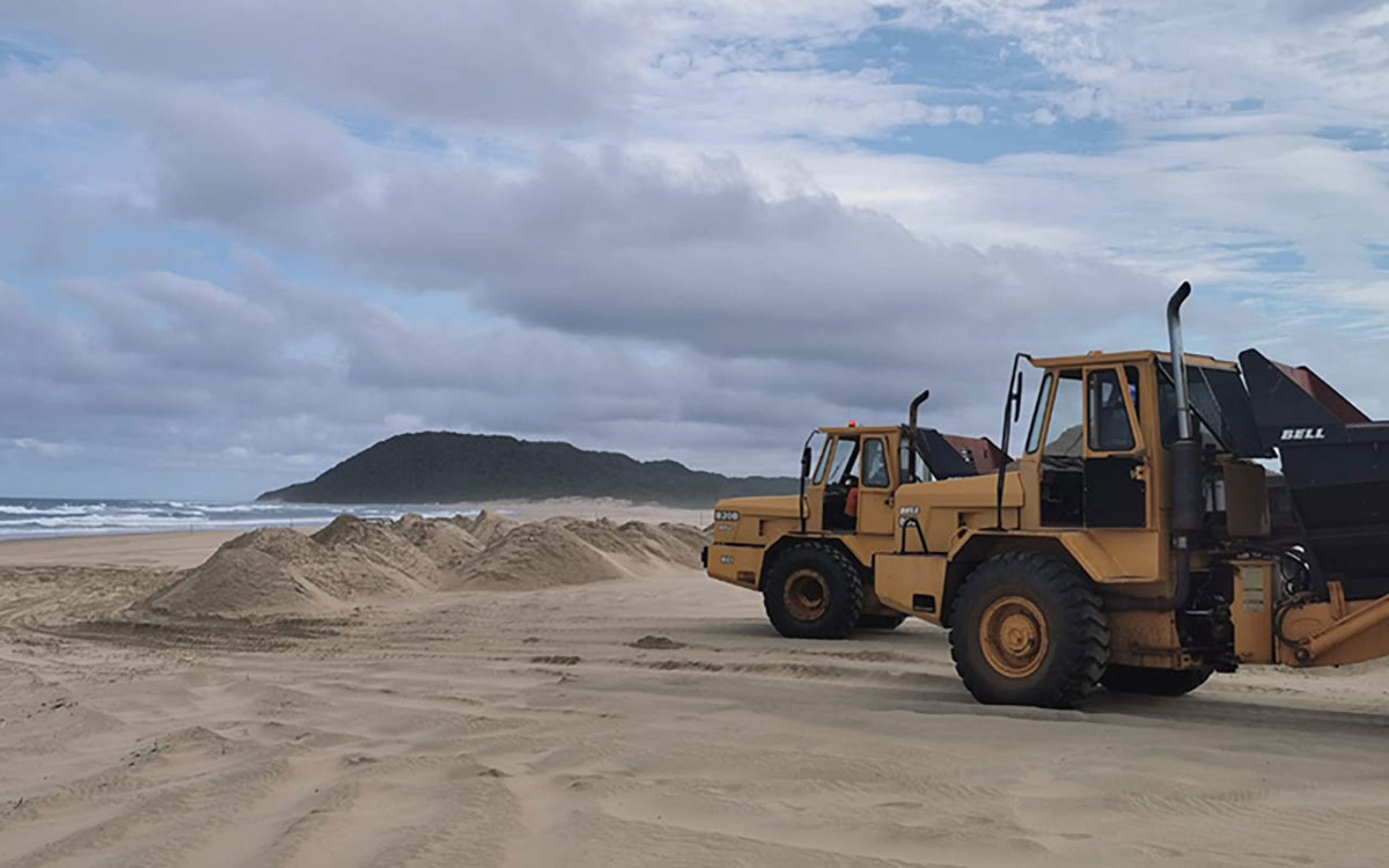
Lake St Lucia Estuary Mouth Intervention
05 January 2021

Monday the 4th of January 2021 marked the day the recommendations of the St Lucia Estuarine Functional Zone Task Team saw the light of day, when equipment was moved on site to begin the implementation of a short-term solution to help reinstate functionality of the estuary, and reestablish links with the ocean.
Lake St Lucia is one of the largest estuarine systems in Southern Africa. It falls within the iSimangaliso Wetland Park, which is South Africa’s first World Heritage site (recognised by UNESCO in 1999). In the recent years, the estuarine system has not been able to function naturally.
The following principles were thus adopted at the St Lucia Symposium, as key steps that should be addressed to restore function to the system:
the need for reconnection between the marine system and the lake; the reduction of sediment load in the bay; the need for restoration of estuarine functionality; the need to resolve back-flooding into agricultural fields which currently is resulting in agricultural loss; the restoration of economic activity, including tourist attractions; the importance of managing the floodplain and prevention of silt transportation to the estuary; consideration of future plans to maintain the functionality of the estuary. The consultative process led by the new management of the iSimangaliso Authority has been ongoing, with the involvement of various stakeholders. This extensive consultation culminated in a symposium held from 13 – 15 October 2020, which included scientific experts in various fields, business operators, community members and community leadership, traditional leadership, small scale fishers, private and associate/ affiliated farmers, NGOs & NPOs, provincial and national departments, as well as key government parastatals.
At this symposium, a presentation was made of actions that have been taken over the past few years, linked to the Global Environment Fund (GEF) project. It was noted that while the restoration of the St Lucia Estuary/uMfolozi catchment connectivity has the potential for positive long-term benefits, short-term challenges for stakeholders remain, and ongoing interventions and monitoring may be needed to maximise positive outcomes.
A key resolution of the symposium was to establish an inclusive multi-disciplinary task team to take forward the resolutions suggested by the attendees of the symposium. The task team should deal with the challenges currently being experienced by these multiple stakeholders. At its first meeting in November 2020, the task team discussed and considered necessary interventions, and their phased implementation. It was recognised that there are short term, mid-term and long-term solutions to be considered to restore the optimal ecological functioning of the system. Key short-term interventions were deliberated at this first meeting and four technical teams were appointed to investigate and report-back on the following focus areas: scientific, legal, finances and logistics, and communications.
It was also agreed that the collection of ongoing survey and monitoring data would be important going forward to ensure a proactive approach to management of the system, and that longer term interventions would be discussed by the task team at future meetings.
The second task team meeting held on the 15th of December 2020, confirmed the need to urgently focus on a short-term solution to assist the system to function in its natural state as an estuarine functional zone. A unanimous resolution was taken by the task team to recommend to the iSimangaliso Wetland Park Authority that urgent action be taken prepare the area to attempt to achieve a reconnection between the sea and the St Lucia lake, and Umfolozi and Umsunduzi rivers. A detailed and time-bound action plan was developed to achieve these interventions, to unlock the functioning of the estuarine functional zone time-bound action plan.
The action being taken today is the beginning of the implementation of the time-bound action plan recommended by the task team, with the intention of restoring the ecological functioning of this unique and dynamic system. The iSimangaliso Authority remains committed to consultation and engagement on this complex issue with any stakeholders and parties accordingly.
Media enquiries should be directed to Bheki Manzini at
